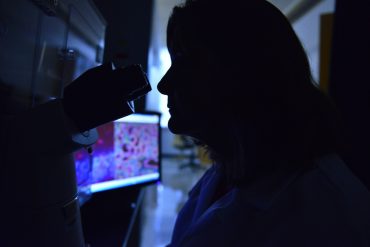May 11, 2015

The Curious Case of Inflammation: One Lab’s Mission to Put the Pieces Together
White coat, dark room. Jean Camden, a senior technician in the Weisman lab, reviews salivary gland and brain tissue samples for research on inflammation. | Photo by Paige Blankenbuehler, Bond LSC By Paige Blankenbuehler | MU Bond Life Sciences Center There’s a criminal on the loose, striking every day. Millions fall victim, but there’s still no…